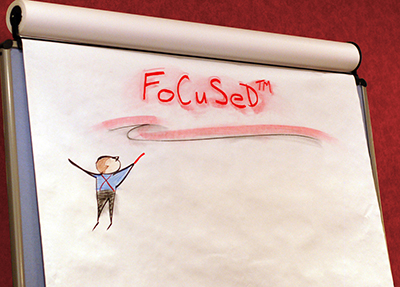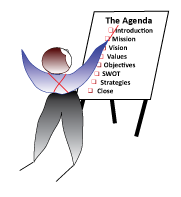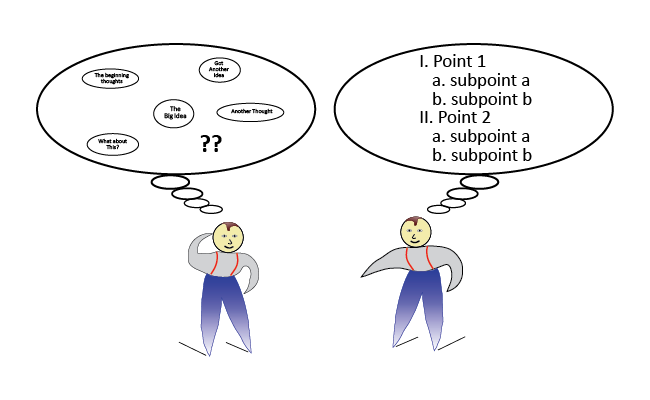May 2007 - The FoCuSeD™ Facilitator eNewsletter
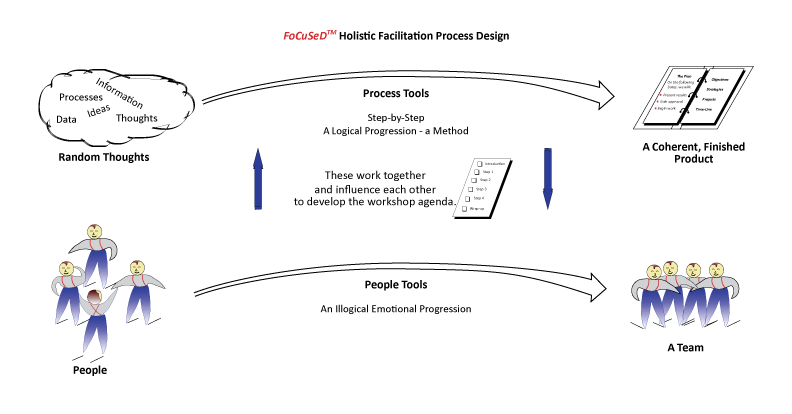
Holistic Parallel Process Development | Gary Rush Facilitation
I’ve been an entrepreneur for over 23 years. Before that, I managed my own people, and not long ago I dealt with my own employees. I’ve learned many valuable lessons dealing with all the different people, but the most valuable lessons I learned, came from working with my family.
I may be listed as the only employee of MGR Consulting, however, the website, courses, marketing, and everything else I do is in collaboration with Millie and our sons, Alvaro and Sean – my family. In our family, there is no rank (well, unless you consider that I do whatever Millie says or else). We are opinionated with strong personalities, and are often stubborn when we take a stand. We go through different steps just to reach consensus (this is where the good, the bad, and the ugly come in).
Until now, facilitation techniques have been about process or group dynamics. Even FAST was biased towards process with some information about group dynamics included because I knew something was needed regarding the group and the transformation of the participants into a group. In dealing with my family, I recognized that we always go through two parallel processes – group dynamics in reaching consensus and a process to build the product. It told me that process and group dynamics had to evolve in parallel to be successful – it had to be holistic – including or involving all of something – the whole.
Step 1 – Divergence 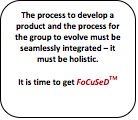
I recognized that we all had to be able to express our own opinions. We needed to “get it out”. That allowed us to be heard and feel like we were a significant contributor. Whenever anyone of us could not express him or herself, the process would stop and not progress towards consensus. We needed to diverge (this is the good and the bad).
Step 2 – The Struggle
I recognized that once we had diverged, we struggled to understand each others' opinion or point of view because we think differently. When we disagreed, we stopped listening to each other and emotions took hold (this is the ugly). When we found a way to begin listening to each other, we moved to the next step.
Step 3 – Convergence
Once we began to listen, we began to converge – to find a solution we could all live with. When we worked through the opinions and points of views, we moved towards consensus.
We always diverged, struggled, then converged to reach consensus and it was always better than any one of us could have done on our own.
How it Applies to You
Every group needs to go through all three steps. Groups cannot jump to convergence without diverging and struggling first. When you plan a process – as a Facilitator or as a Leader – you must seamlessly integrate the process to develop the product (e.g., a strategic plan, requirements, a decision, etc.) with the emotional group process always considering that:
- Everyone needs to be heard (divergence).
- Healthy conflict is required and will emerge if allowed (struggle).
- Listening enables a group to move towards consensus (convergence).
It reinforces two elements that make a team:
- Trust and
- Healthy conflict
When trust exists in a group, the people feel comfortable to disagree, enabling healthy conflict.
The group process is illustrated as:

*This is adapted from the Diamond of Participatory Decision-Making, from The Facilitator’s Guide to Participatory Decision-Making, by Sam Kaner, Lenny Lind, Cathy Toldi, Sara Fisk, and Duane Berger.
Applying this to groups:
- All groups go through this process whether they are aware of it or not. Being aware is helpful because groups won’t get so frustrated during the first two steps – especially during the struggle. Unfortunately, some people are afraid of the struggle, but without healthy conflict, we don’t learn from each other.
- Everyone needs to allow and encourage others the opportunity to contribute in order to reach consensus. That includes work, family, or community. When we shut others down, we lose the opportunity to hear their ideas and we lose the ability to reach consensus. Divergence gives groups options, ideas, and enables every person to feel valuable.
- Without planning, groups get stuck in the struggle without any chance of moving on. Groups need to listen to each other – actively and without bias – to move to convergence. This is especially important for Facilitators – active listening is key.
- This is not a one-time event. It repeats with every major discussion or decision whether in business or in life. The healthier and more mature the team, the healthier the struggle step, but it is still a struggle.
- A group that is always warm and fuzzy is not healthy because they are afraid to disagree. They are unable to engage in healthy conflict.
As a Facilitator, I know that the process to build a product – website, strategic plan, or solve a problem – is not what drives the overall workshop, in fact, it is often easy to determine. I must seamlessly integrate it with the emotional group process or it is not fruitful because the emotional group process usually drives the overall workshop process. The workshop process and group dynamics cycles must be planned to evolve in parallel. The overall process design must be holistic. It is not sufficient to select a workshop agenda and then insert exercises in different areas and hope that it works. That is like learning dance steps without the music – you can go through the motions, but you don’t have the rhythm.
You must proactively plan the emotional process along with the workshop process to develop the product - one without the other is fruitless.
Conclusion
In any situation, home, work, workshop, etc., do the following:
- Allow and encourage everyone to participate, to contribute.
- Don’t avoid conflict – it’s critical – use active listening. Listening is the most important skill you have for moving through the struggle.
- Never plan to develop something, e.g., a plan, a solution to a problem, etc., without planning the emotional process at the same time. The entire process must be holistic.
Remember, if your group or family struggles but stays together, they are healthy and will continue to grow. If they never struggle, there is a hidden problem. Embrace the struggle. FoCuSeD™, it’s the future of facilitation! ![]()


